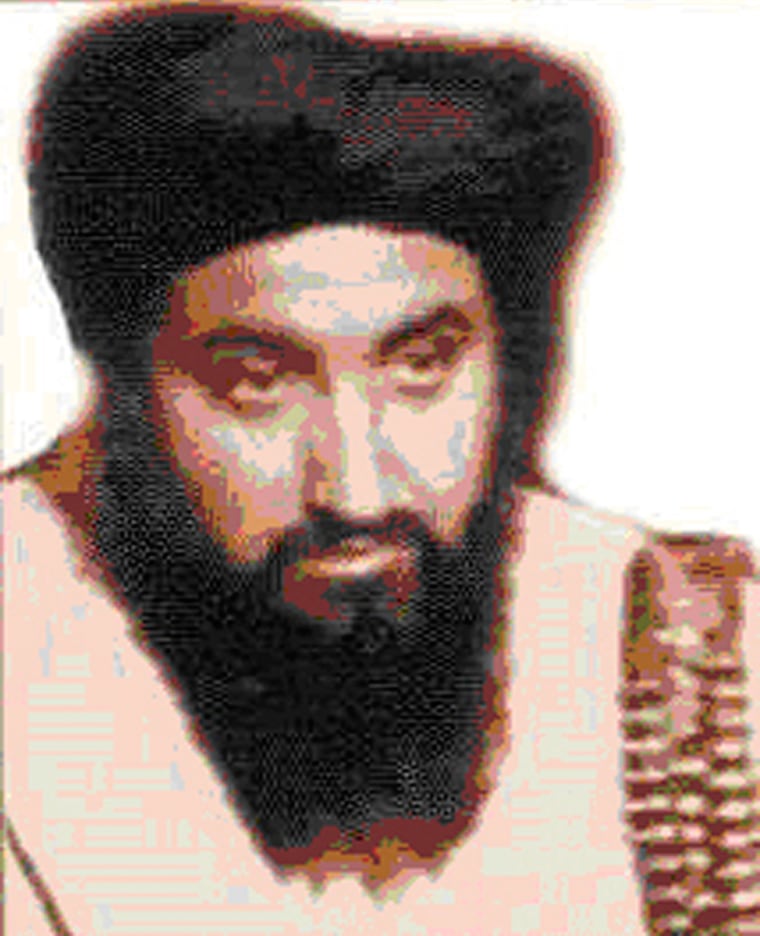A top Taliban military commander described as a close associate of Osama bin Laden and Taliban leader Mullah Omar was killed in an airstrike this week close to the border with Pakistan, the U.S. military said Saturday. A Taliban spokesman denied the claim.
Mullah Akhtar Mohammad Osmani was killed Tuesday by a U.S. airstrike while traveling by vehicle in a deserted area in the southern province of Helmand, the U.S. military said. Two associates also were killed, it said.
There was no immediate confirmation from Afghan officials or visual proof offered to support the claim. A U.S. spokesman said “various sources” were used to confirm Osmani’s identity.
Osmani, regarded as one of three top associates of Omar, is the highest-ranking Taliban leader the coalition has claimed to have killed or captured since U.S. forces invaded Afghanistan to oust the Taliban regime in late 2001 for hosting bin Laden.
U.S. military spokesman Col. Tom Collins described Osmani’s death as a “big loss” for the ultraconservative militia.
“There’s no doubt that it will have an immediate impact on their ability to conduct attacks,” Collins said. “But the Taliban is fairly adaptive. They’ll put somebody else in that position and we’ll go after that person, too.”
He was regarded as highly ideological and was instrumental in some of the excesses of the Taliban rule such as the destruction of the ancient Buddha statues in Bamiyan and the trial of Christian aid workers in 2001, Rashid said.
Taliban: Airstrike killed other members
A purported Taliban spokesman, Qari Yousef Ahmadi, denied that Osmani had been killed, saying the airstrike instead killed Mullah Abdul Zahir, a group commander, and three other Taliban fighters.
“I confirm that Osmani is alive and is in Afghanistan,” Ahmadi told The Associated Press by phone from an undisclosed location.
Collins said officials waited four days to announce the news in part so that they could be sure it was Osmani who was killed.
“The vehicle was completely destroyed, there was nothing to recognize,” Collins said. “But we have various intelligence assets that we monitor, that we look at very closely, and of course we work with the intelligence agencies of the Afghan government and through those sources we are sure that he is dead.”
Osmani, the Taliban’s chief military commander in southern Afghanistan, played a “central role in facilitating terrorist operations” including roadside bombs, suicide attacks and kidnappings, the U.S. said.
Ahmed Rashid, a leading author on Islamic militancy, said the death was a “major blow” to the Taliban.
“It’s the first casualty among the top Taliban leadership in the past five years, which makes the strike very significant,” he said.
It also comes ahead of what is expected to be a major Taliban offensive in the south in February or March, and Osmani may have been preparing for that when he was killed in Helmand, Rashid said.
4,000 dead in 2006
The Taliban militia has stepped up attacks this year, particularly in southern Afghanistan, and waged fierce battles with Western and Afghan forces. About 4,000 people have died in the violence, raising fears for the country’s future and experiment with democracy after a quarter century of war.
The whereabouts of Omar, the Taliban’s reclusive leader who has a $10 million reward on his head, remain a mystery.
Collins said Osmani was part of a group of “co-equals” at the top of the Taliban leadership chain just under Omar and was also in charge of the Taliban’s finances.
Collins said Osmani had been “utilizing both sides” of the Afghan-Pakistan border, and that the U.S. military had been tracking him “for a while.”
“When the time was right, and we thought we had a good chance of hitting him without causing any harm to civilians, we struck,” he said.
Although the U.S. said Osmani was an associate of bin Laden, Omar and Afghan insurgent leader Gulbuddin Hekmatyar, Collins said he did not know the last time Osmani had contact with any of the three.
During the Taliban regime, Osmani was the corps commander of Kandahar, the militia’s seat of power.
More recently, he was regarded as one of the top three Taliban leaders under Omar, along with another senior military commander in the south and southeastern regions, Mullah Dadullah, and influential policy-maker Mullah Obaidullah.
In June, a man claiming to be Osmani — his face was concealed by a black turban — gave an interview to a Pakistani television network in which he said Omar and bin Laden were alive and well. He claimed to be receiving instructions from Omar.
